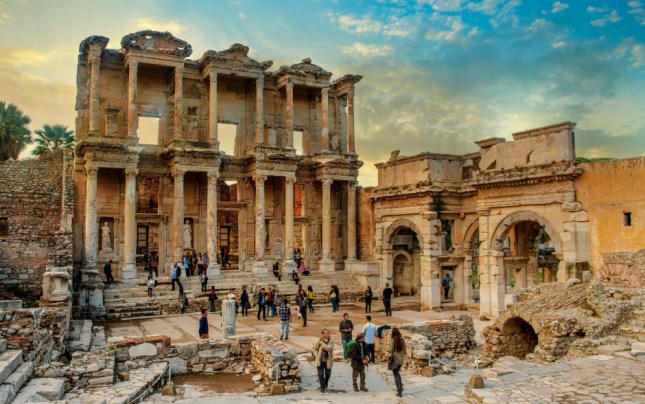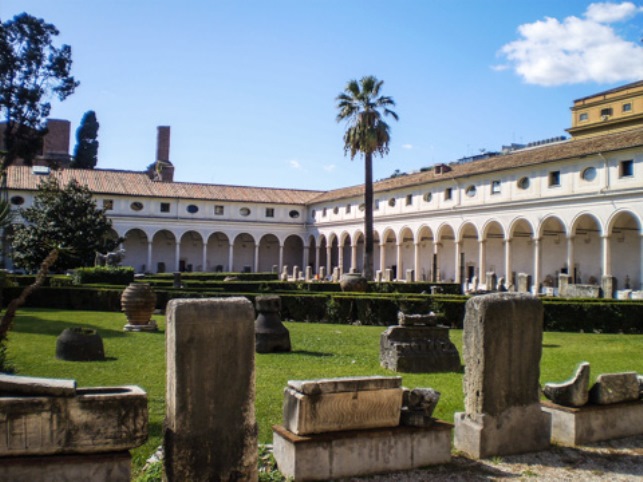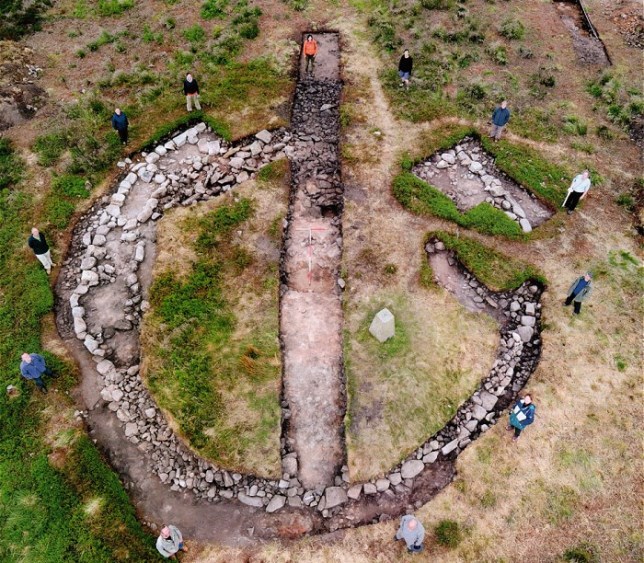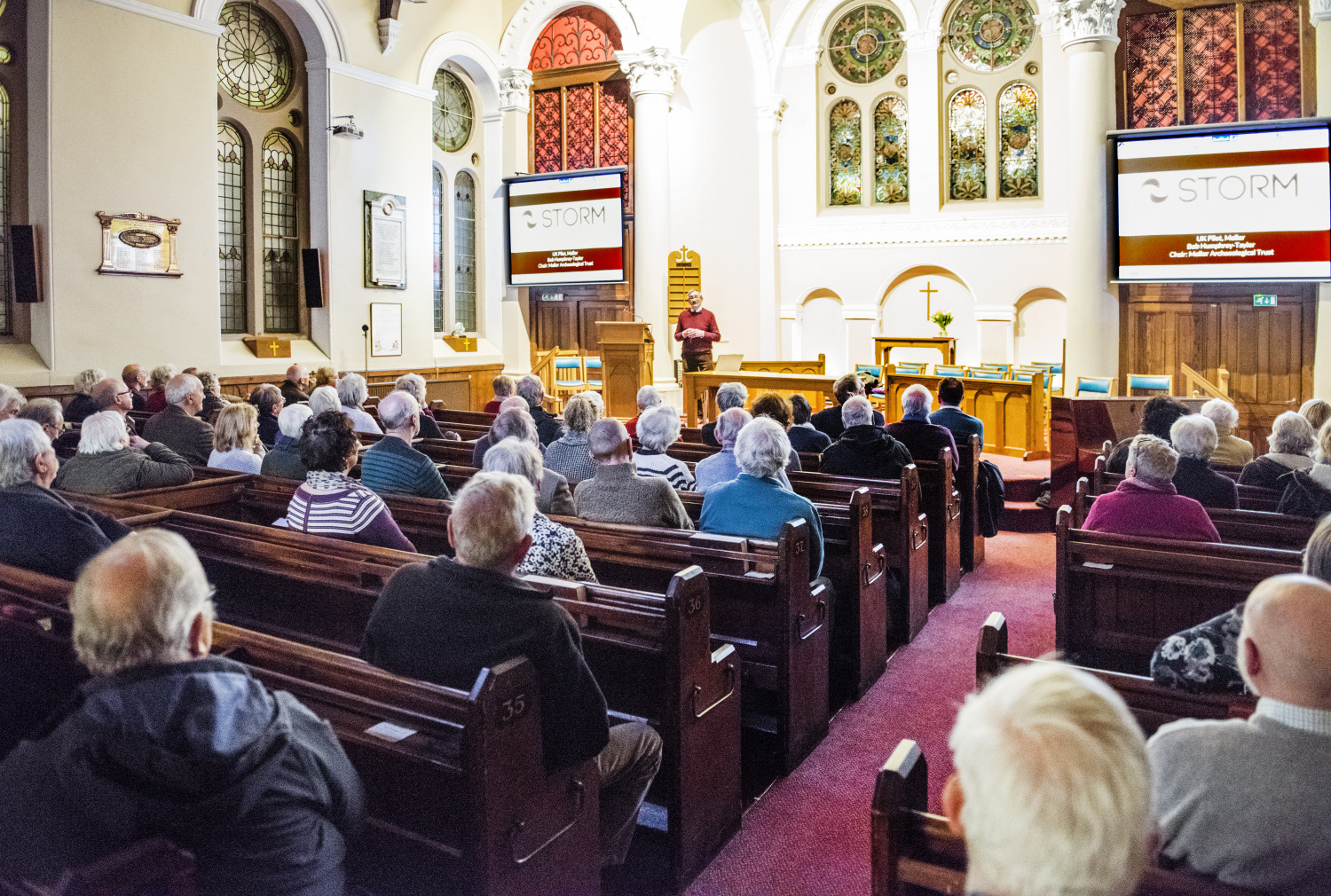 Ephesus, Turkey
Ephesus, Turkey
STORM OVER MELLOR -
An acronym was originally just the initial letters of an institution or a project, used as a shorthand by people involved. However, the modern trend is for governmental agencies to think of the acronym first and then find a mission statement that can fit (or sort of fit).
STORM is the contr ived acronym for an EU programme designed to assess the impact of climate change on archaeological sites. The full title is -
ived acronym for an EU programme designed to assess the impact of climate change on archaeological sites. The full title is -
Safeguarding Cultural Heritage through Technical and Organisational Resources Management.
As you can see, some words had to be shoehorned into the title and others were omitted but the end result is a simple and memorable name for a complex research project. Bob Humphrey-Taylor, the chairman of Mellor Archaeological Trust came to explain the reality behind the name.
As a matter of policy the EU tries to take an integrated approach. Historic and archaeological assets both encourage and depend upon tourism so protection is important. However, as sites are made more accessible, there is inevitably more damage and therefore more need for protection. Another sort of damage is natural - the damage caused by the weather (short term) or climate (long term.) It is this that the STORM project is concentrating upon.
Five contrasting sites have been selected from across Europe.
As well as Mellor there is:
Ephesus is a World Heritage site dating back to the 10th century BC.
The Baths of Diocletian were built in 300 AD as public baths for the people of Rome but over the centuries they have been greatly modified by building both a basilica and a monastery within its footprint as well as more recent constructions.
Rethymno originated in Minoan times but is mainly known for its Old Town built by the Venetians between the 13th and 16th centuries.
Tróia is the site of a settlement from Roman times involved in fishing and salt production.
All three of the sites for which Mellor Archaeological Trust is responsible are included in the research - the Bronze Age burial ground at Shaw Cairn, the Iron Age to medieval fortified encampment at the Old Vicarage and the newly excavated Mellor

These sites range in size, in age, in geographic location and, above all, in the nature of the long term threats to their fabric. As such they present a wide range of problems and conditions. Air pollution, flooding, earthquakes, vegetation growth, too much rain, too much sun. (Mellor does not have the latter problem). Problems such as these are present on almost all archaeological sites and the work carried out on these five sites in measuring, testing and researching will be of use to all of them. Not just the current threats but also the longer term threats of climate change and increased human activity whether incidental such as traffic pollution or planned such as tourism. Shaw Cairn
Shaw Cairn
During the three years of the project a wide range of sensors, gauges and surveys are being employed at all the sites by the various universities and research institutions associated with the project. The Mellor site is working closely with the University of Salford and Historic England but many other partners are also involved.
In time various schemes tailored for the individual site will be recommended but in almost every case these will be reversible if they are found to be ineffective or possibly even harmful. The results of all these trials will be widely demonstrated to the involved stakeholders and the relevant authorities. As a result they are expected to lead to new, more efficient governmental processes for the protection of the sites against climate changes and natural hazards.
The particular areas of concern at Mellor relate to extremes of wetting and drying, the slippage of embankments and the long term conservation of brick and stone structures. For example, are they best preserved in the open or should they be buried for protection?
The project is designed to last three years, ending in May 2019 but all of the sites will carry on with their measurement and research as far as possible and try to spread the knowledge gained to other sites with similar problems. Brexit or no Brexit, we can still cooperate and share our knowledge.
 'STORM over Mellor', Marple Local History Society, January 2019
'STORM over Mellor', Marple Local History Society, January 2019
Bob gave us an important talk about some very local historic assets. It is good that there is a programme to conserve and develop them but it is all too easy to think that someone else will do it. It is our common heritage and we are all responsible. If you feel you can make any type of contribution please contact www.matrust.org.uk

